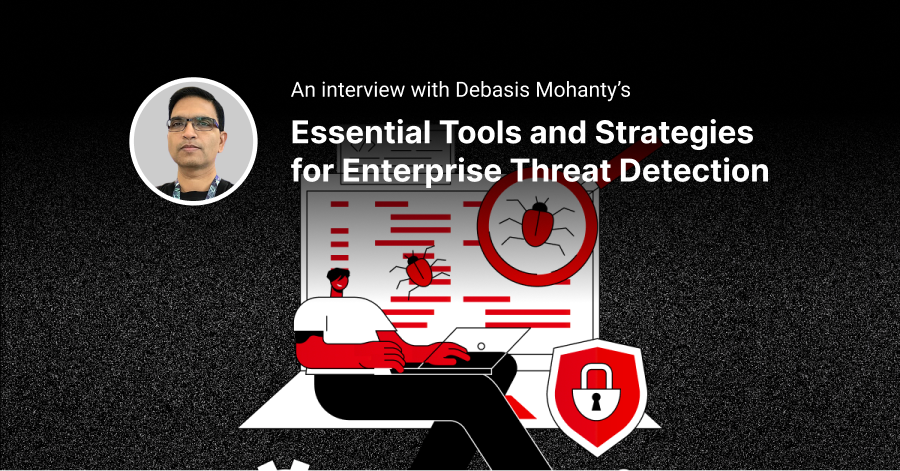A world where software applications are constantly changing, adapting, and evolving, calls for a testing technique that is also just as dynamic.
In this blog we are looking at the Dynamic Application Security Test (DAST) - a testing method that is used to analyze web applications during run-time. Keep reading to find out how DAST can enhance the results of static testing and help you reach the full potential of application security.
What is Dynamic Application Security Testing (DAST)?
Dynamic Application Security Testing or DAST is a type of vulnerability testing that tests the application while it is running. It is a black box test that examines the application from the outside, without any knowledge of the app’s internal workings. Attacks on the app are simulated using various testing tools , and the responses are then recorded. DAST can help you identify vulnerabilities in your software, even without providing any input. It works on the application layer and not on the specific software. DAST differs from conventional penetration testing or static application security testing (SAST) in that it is performed in real time.
How Does DAST Work?
DAST mimics a malicious attacker by using automated and manual tools to simulate attacks on an application. The goal is to find unexpected outcomes or results that can be used by the hackers to compromise an application. DAST tools attack with the same restricted knowledge and information about the application as an external hacker would because they lack internal information about the application or the source code.
DAST tools spot possible input fields inside an application and then submit a variety of unusual or malicious inputs such as SQL injection commands, cross-site scripting (XSS) vulnerabilities, long input strings, and other unusual inputs. They then determine whether or not an application contains a specific vulnerability based on its response to these inputs.
Why is DAST Important?
DAST solutions are designed to detect vulnerabilities in an application while it is running. It is a test that can evaluate the security of an application in a production environment. DAST conducted during the SDLC stages, helps to detect possible configuration or runtime errors before the app is released to the public. Here are some more ways in which DAST can help your business:
SDLC Integration
This is one of the primary benefits of dynamic testing. With DAST, businesses can gain a better understanding of how their software applications behave and identify vulnerabilities early, before they are exploited by hackers.
Low False Positives
DAST solutions detect vulnerabilities by exploiting them. This allows them to verify whether the identified vulnerability actually threatens the functionality or security of the application.
Language Agnostic
DAST solutions perform black-box testing on running applications, which means they can be used for applications written in any language for any environment.
Real-World Attack Simulation
DAST mimics attackers and simulates realistic attacks to help organizations become more secure.
Independent of Technology
DAST tools are technology-independent and examine applications from the outside using HTTPS and HTML interfaces. They can therefore work with any programming language and framework.
Compliance
DAST is also useful for meeting industry standards of compliance. It can simplify PCI DSS compliance and other regulatory requirements.
Retest of Fixed Vulnerabilities
When a security flaw is discovered, it is automatically added to the DAST test suite. If these issues resurface, DAST detects them before they are released.
Are CI/CD and DevOps the Same?
SAST and DAST are two opposite approaches to testing software applications. Static tests follow a developer-first approach and scan the application from the inside-out, while dynamic tests follow a hacker-first approach, scanning the application from the outside-in. However, they both share the same goal - to find security vulnerabilities that could be exploited by bad actors.
Listed below are some of the key points of difference between SAST and DAST:
Type of Security Testing
SAST is a white-box security test while DAST is a black-box test. This means that during a static test, the tester has access to information about the application such as the framework, design, and technologies, while the same information is unavailable to the tester during a dynamic test.
Requirements and Analysis
DAST requires a running application whereas SAST does not. SAST looks for vulnerabilities in the source code while DAST does the same by executing the application.
SDLC Stage
A static test can be executed as soon as the code is feature-complete, and therefore can identify security flaws in the early stages of the SDLC. However, DAST can only be run towards the end of the development cycle.
Supported Software
SAST usually supports all types of software including web applications, web services, and thick clients. DAST usually only scans applications such as web apps, and web services and doesn’t support other types of software.
Although SAST and DAST techniques are different from each other, they work well together. While they each provide unique coverage, combining the two helps to fully secure your application.
Whereas, (CI/CD) refers to the continuous automation and monitoring of the application lifecycle - right from integration and testing to product delivery and deployment. When properly implemented, CI/CD allows for the frequent delivery of software changes to production. This provides more opportunities for customers to provide feedback, promoting an agile development culture.
Essentially, CI/CD is a DevOps strategy that utilizes the proper automated testing tools to execute agile development in the organization.
Both practices have the same objective - to produce better software in lesser time.
DAST Best Practices
Follow these DAST best practices to improve the detection, reporting, and remediation of security vulnerabilities:
Ensure DevOps Collaboration
Connect the DAST tool to the DevOps team's ticketing and bug tracking systems in order to ensure that the vulnerabilities discovered are properly prioritized and addressed.
Use Defensive Coding Techniques
Defensive programming helps developers to think about how attackers might manipulate vulnerabilities and misconfigurations, and then design prevention strategies into the application as it is being built.
Employ DAST sooner in the SDLC
The earlier you incorporate DAST into SDLC, the better your results. Early testing allows you to fix vulnerabilities sooner, making remediation easier and less expensive.
Integrate DAST into the CI/CD Pipeline
DAST can be used at all stages of the
CI/CD pipeline from development to production. Detecting security issues as they are introduced into the pipeline can significantly improve security and foster a
DevSecOps culture.
Conclusion
While testing applications for security vulnerabilities, a purely static approach may seem enough. Each of the individual components must function as intended and the app will perform to its fullest potential. However, a whole new set of problems emerge while trying to execute the application. A DAST-focused approach accounts for these problems and all the variables that come into play in a production environment. Without dynamic testing, the application is unlikely to reach its peak performance and could even be vulnerable to data breaches and other security threats. Teams that ignore the critical importance of DAST while building an application, are likely to fall behind other competitors.






